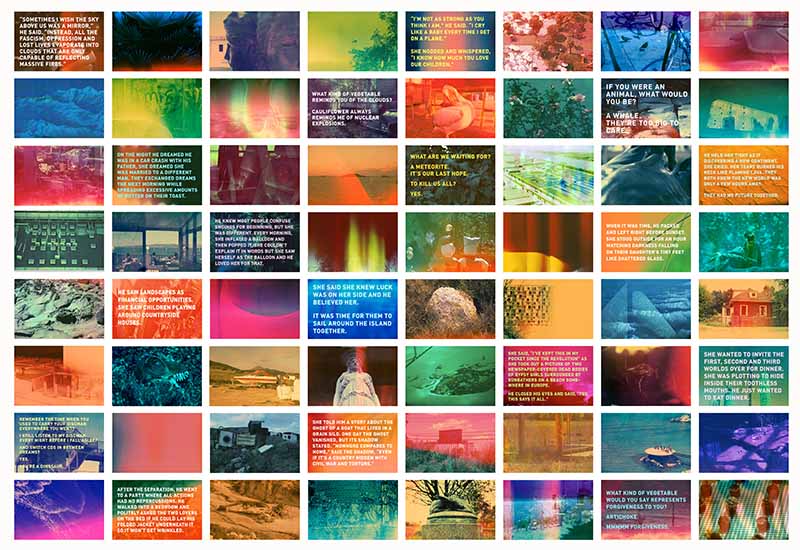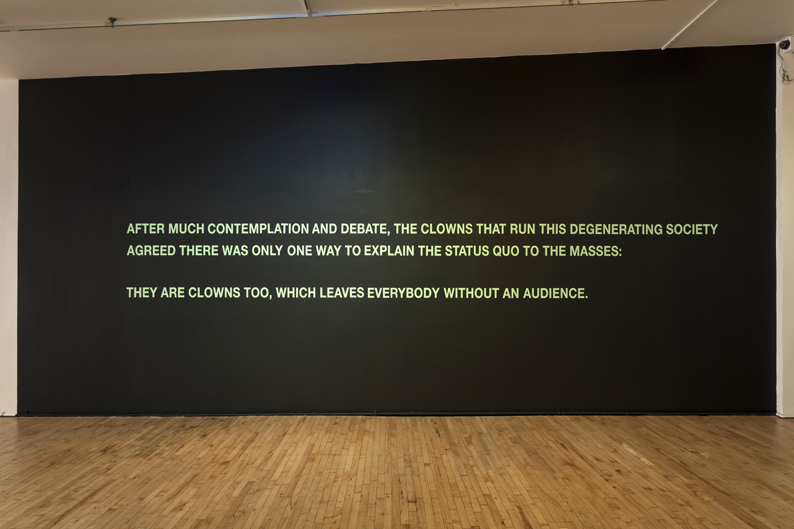
I don’t know much about art, ‘but,’ as someone once said, ‘I know what I like’. The classics aren’t really for me. I’ve visited the galleries of Florence, I’ve seen countless Madonnas and childs. I don’t feel much desire to see any more, thanks (yep, the pains of privilege etc.). I can appreciate – in a layman sort of way – that some of those paintings are exquisite, technically masterful. But do they make me feel anything, no? I guess as a faithless individual with – it would be fair to say – a suspicion and unease of organised religion, I’m not the target market.
What I seek is scale – both literally (big art is just better, no? Who doesn’t like a sculpture you can walk under, or better yet climb over?) and figuratively (bold ideas, a global outlook, a desire to change the way the audience thinks). I like text – the more thought-provoking, absurd, surreal, revolutionary, left-leaning the better. I like bold colours. I like sounds. Sometimes I like film (although it can often feel like little payback for the time you’re forced to invest in a gallery).
I’ve kind of covered much of this before. Here.
I really liked The Stars Were Aligned for a Century of New Beginnings, an exhibition by Basim Magdy at the Arnolfini in Bristol.
It was an entirely unplanned visit, we wondered past the Arnolofini, both kids in tow and thought we’d pop in. It started with a film – as I said, I have misgivings about film. My son was captivated. I narrated the subtitles (seemingly assorted not enitrely related snippets from various fictions) and he was transfixed by the images. Generally washed out, natural images, the film slightly distorted, looking old, other-worldly. We wandered on, into a large room with huge, bright colours and assorted artworks. A black wall bearing the bleakly humorous statement below.

The opposing wall was the one featured at the start of the article (and very small below). Bright images, washed out images. Excerpts of text from who knows where. Sometimes you laugh, sometimes you ponder, often you do both.
And generally, that’s what Magdy seems to make me do. Laugh, then ponder. His 13 Essential Rules for Understanding the World are presented as a joke, all smiley faces drawn on flowers.
Then you read it, and it feels tougher, bleaker (that word, again). Less a set of rules, more a seething critique, presented as a set of rules.
His work is about failed utopia, our failures to progress, and a fascination with the promise of sci-fi. My thoughts were very much provoked.






